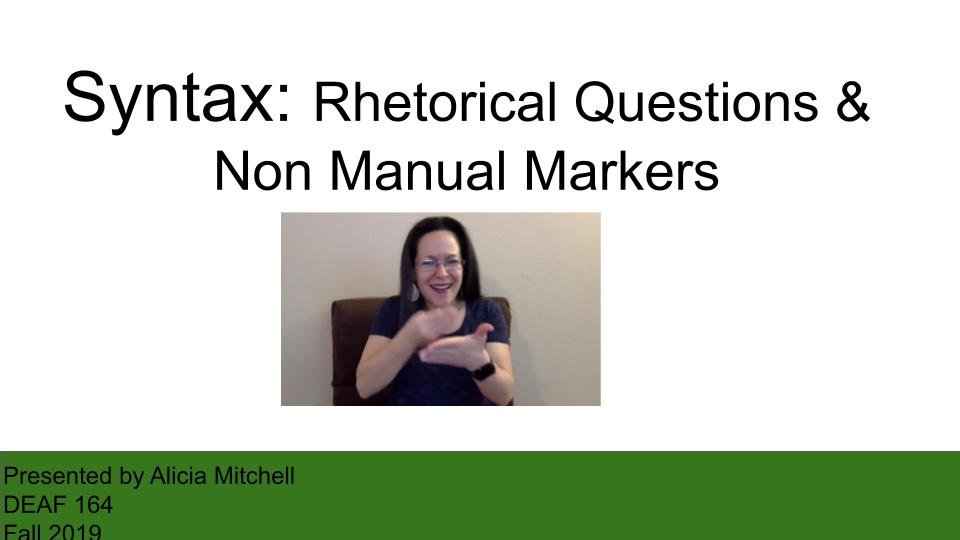
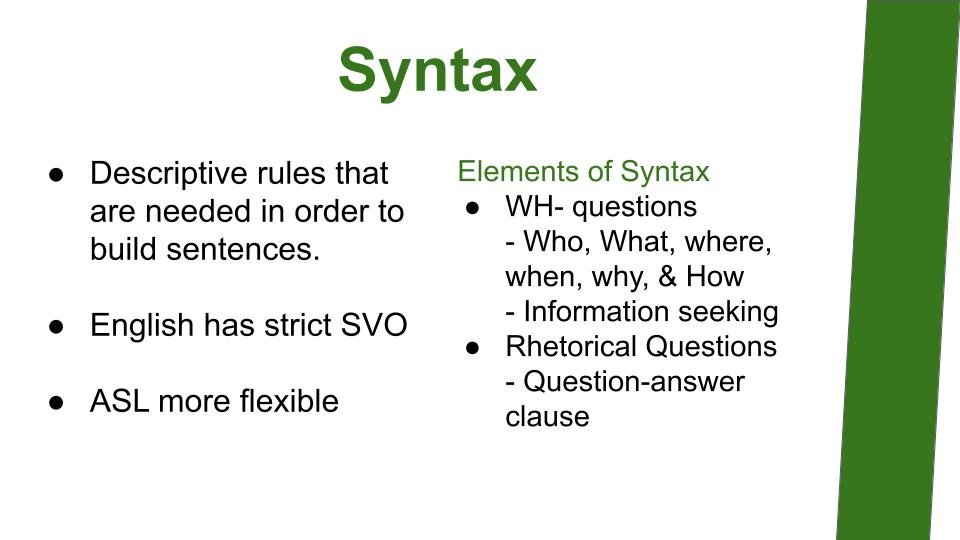
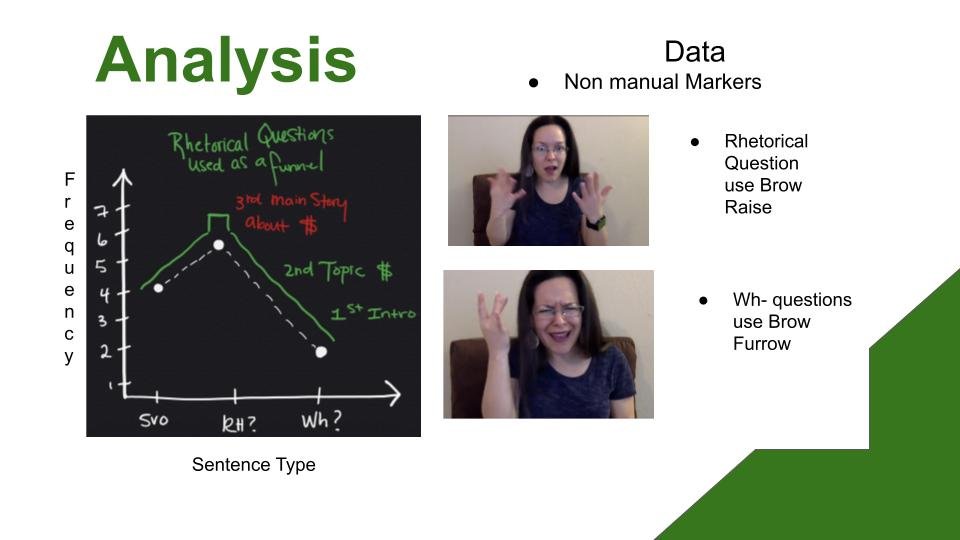
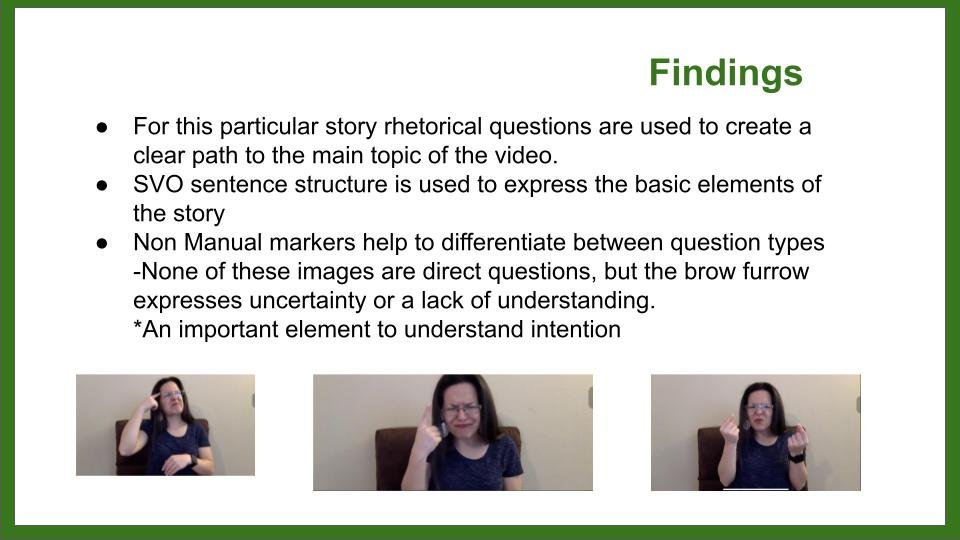
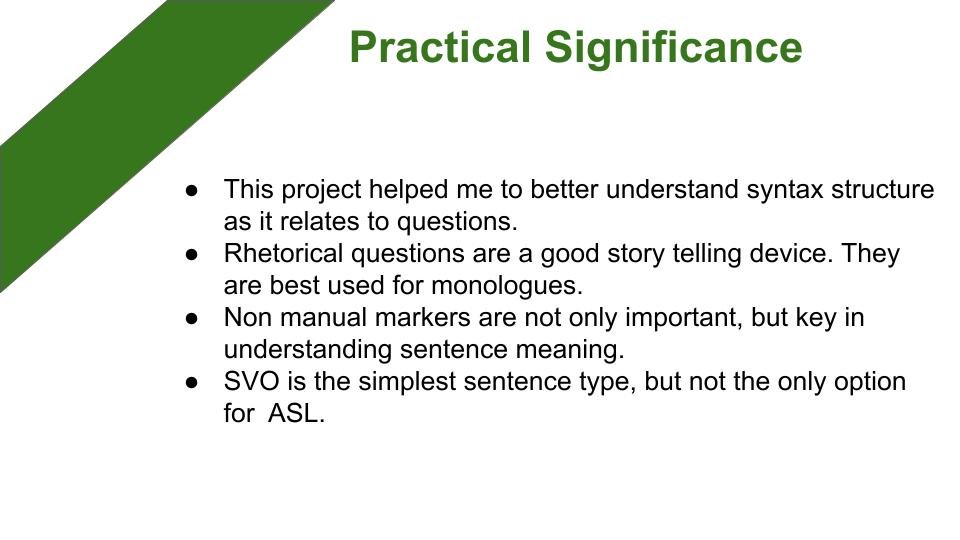
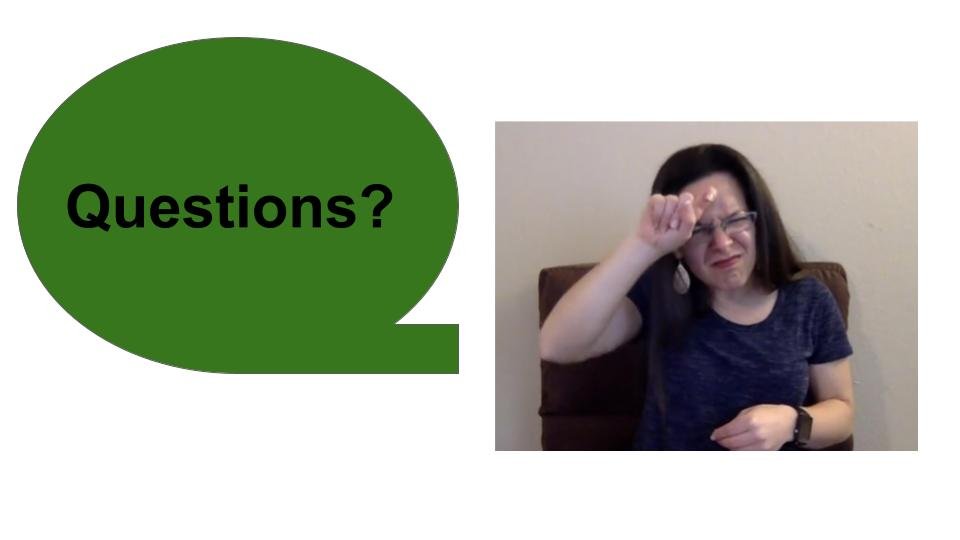
ASL Conceptual understanding Sample: Linguistic Analysis
Syntax is the descriptive rules that are needed in order to build sentences. Some languages such as English have strict rules that require a specific word order. For English this means that the subject of the sentence will come before the verb, and the object of the sentence will come after the verb. With ASL this is not always the case. ASL does allow for flexibility in word order, but only when the discourse information fits in with the sentence. SVO or subject, object, and verb refer to who or what performs an action, the action itself, and who or what is affected by the action. One way ASL differs in SVO is WH- questions. WH-questions are used to seek information like who, what, where, when, why, and how. In the video “Talking About Money”, WHAT is actually used as a rhetorical question. Rhetorical questions in ASL have two parts: the first part being the question, and the second part being the answer. To further understand how WHAT is used as a rhetorical question, we will look at the first thirsty seconds of “Tallking About Money”.
The first two sentences of the video use SVO word order. IX_1 being the the subject, KISS-FIST being the verb, and TRAVEL being the object e.i the thing that is being KISS-FISTed. Again with the second sentence, IX_1 is the subject referring to the self, FINISH, the action that was already taken, TRAVEL DS_5claw(globe) the object that was finished.
IX_1 KISS-FIST TRAVEL. IX_1 _nm_bf FINISH TRAVEL DS_5claw(globe).
It is after this introduction, the video moves into the topic. The next sentence uses a rhetorical question to introduce the main theme of the video. (00:07-00:14) This is question- answer word order used to introduce a new topic that is still related to the subject that was introduced in the first sentence. The question = what’s my favorite part of traveling. Answer = examining different money.
ONE MY FAVORITE THINGS RELATED TRAVEL _nm_bf WHAT, EXAMINE DIFFERENT[+] MONEY
The next sentence is used to emphasize how the money is different.(00:15-00:22). Here the different aspects are placed in front of the sentence in order show that this is what makes the different types of money cool.
COLORs SOMETIMES DIFFERENT[+] fs-SIZE DS_L(money size) DIFFERENT[+] COOLf.
Again in the next sentence a rhetorical question is used to change the topic from what’s interesting about money in general, to which two country’s money will be focused on going forward. (00:23-00:27).
TWO MY FAVORITE MONEY _nm_ br WHAT, CANADA IX(there), AUSTRALIA IX(there).
The last sentence is a rhetorical question again. In this video the rhetorical questions are like a funnel. The funnel starts with the introduction of travel. This introduction explains that the person has experienced the different types of money because of travel. Now that travel is established as the reason for seeing different money, the video gets to the subject of a specific type of money. This ultimately leads to the telling of a story about experiencing plastic money. Each part of the introduction insures that the person watching the video will have a clear path to the subject being discussed. (00:28-00:34).
BOTH IX(Canada, Australia) MONEY _nm_br WHAT, fs- DOLLAR DOLLAR[+] SAME-AS IX(here) fs-U.S _nm_ hn
One important aspect of syntax is non manual markers. For ASL WH-questions are asked with a brow furrow. Brow furrows are used to show a question is being asked. This is why rhetorical questions don't use brow furrows; they use a brow raise. The question is asked with the intentions to give the answer right after. The video has a few examples of brow furrows, but not within the first thirty seconds.
Ex: brow furrow (01:50) IX_1 SEE QUESTION-ON-BRAIN, DO-DO WHY